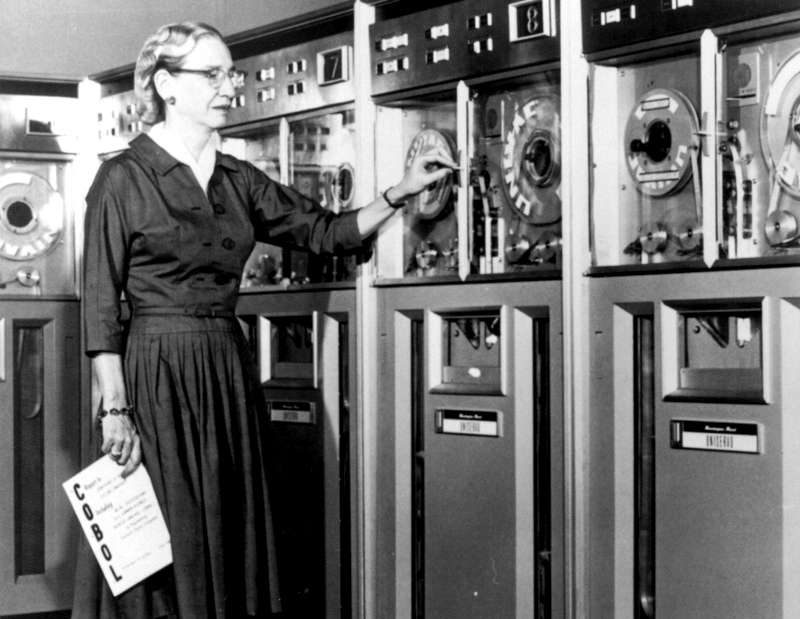With COVID-19 dealing both a healthcare and an economic crisis, the nation’s governors have been issuing increasingly urgent pleas for skills and supplies.
On a Saturday earlier this month, New Jersey’s Phil Murphy issued one such call. In this case, the ask was not for folks with medical training but for programmers. Specifically, New Jersey was seeking programmers who knew how to code COBOL, a programming language that is widely used on mainframe computers like the systems that process the state’s unemployment claims.
With the spike in new claims, there was a need to scale up. Problem was, they didn’t have enough folks who knew the language itself.
It turns out other states were in this position as well. Soon after, Kansas issued a similar call, and Connecticut reported its own challenges. And IBM — the stalwart of the kinds of systems that COBOL powered — scrambled to help fill the void, spinning up a new training course.
Amid the rush, the question remains: Why is there a shortage of programmers proficient in a language that’s used on such important systems?
To find answers, we talked to a pair of programmers who learned the language from Baltimore digital services agency Fearless.
First, a brief history lesson is in order: COBOL, short for Common Business Oriented Language, was developed in 1959 by a team that was led by the famed Grace Hopper. The goal was to develop a language that was user-friendly: It could run on any kind of computer operating system at the time. And, any kind of person could understand it.
“The way it was said when I was learning it was, your nontechnical boss should be able to read your code and understand what it does,” said Luke Samuels, who said it was already considered behind the times when he was in college around the late ’90s and early 2000s.

And even though it’s a programming language like Java and Ruby that followed, it operates a bit differently. For one, it helps to run SUV-sized computers. And these are the kinds of computers where programming involves inputting the commands, then walking away for a while it does its work. Christian Strama, a program manager with Fearless whose first job included COBOL, remembers a terminal that was basically a monitor and keyboard where the mainframe was viewed remotely.
But all this bulk does bring function. It’s particularly good for processing lots of transactions.
“It’s really well suited for accounting, where you’ve got to keep track of credits and debits,” Strama said. “It’s really good for human resource databases where it’s a list of people.”
This meant it was put to work big financial firms, like banks. And it was also used by governments. These large organizations continued to rely on systems that were proven. After all, they were capable of handling millions of transactions without error. There’s a lot on the line.
“If you have one bug, but it happens a billion times, you are affecting a lot of people in a lot of very bad ways,” Strama said.
But in the meantime, the programmers were changing gears to new languages that could build applications in the operating systems, and the cloud that came forward. Colleges started phasing it out. Programmers like Strama saw opportunities to learn new technologies. Samuels pointed out that there was one big moment of need dating back to the Y2K bug to update systems, but then the need started to fade away. Other languages not only evolved to build on the language, but held out more kinds of potential job opportunities.
Samuels likens it to Gaelic — a language that's referenced fondly and held up by some, but is declining in use and rarely taught in earnest to the next generation, who increasingly it finds it unrecognizable.
And yet, the roadblocks to change — whether they be reticence or funding — did have a bill that’s now apparently coming due. With unemployment skyrocketing during the pandemic’s economic slowdown, the legacy mainframe systems have faced a surge even they weren’t meant to handle.
“The risk calculations have gone the other way,” Strama said.
So programmers are needed to scale them, but there aren’t enough knowledgable folks in these states to keep up. As programmers got older, the number of people with these coding skills started to dwindle.
Samuels likens it to Gaelic — a language that’s referenced fondly and held up by some, but is declining in use and rarely taught in earnest to the next generation, who increasingly it finds it unrecognizable.
And that brings us back to Gov. Murphy of New Jersey. Two days after he made his initial call, Murphy said volunteers raised their hand to help, and, quipped at a press conference that after his announcement someone branded him the “COBOL King.”
It may be fun to kick at the 60-year-old language that managed to stick around, but the search for answers for the lack of capacity in a crisis seems to point more in the direction of the human systems that kept it in place.
“Literally, we have systems that are 40 years-plus old, and there’ll be lots of postmortems. And one of them on our list will be, how did we get here where we literally needed COBOL programmers?” Murphy said.
With a surge in unemployment requiring new server capacity in Maryland, we also checked in with the state’s Department of Information Technology (DoIT) to see if there was a need here, but it sounds like they’re all set.
While leaders are reviewing modernization options “all the time,” some of the state’s legacy systems run on COBOL, according to Patrick Mulford, external affairs director at DoIT. Yet there was no signal for volunteers, as he said current staff with these programming skills met the needs.







